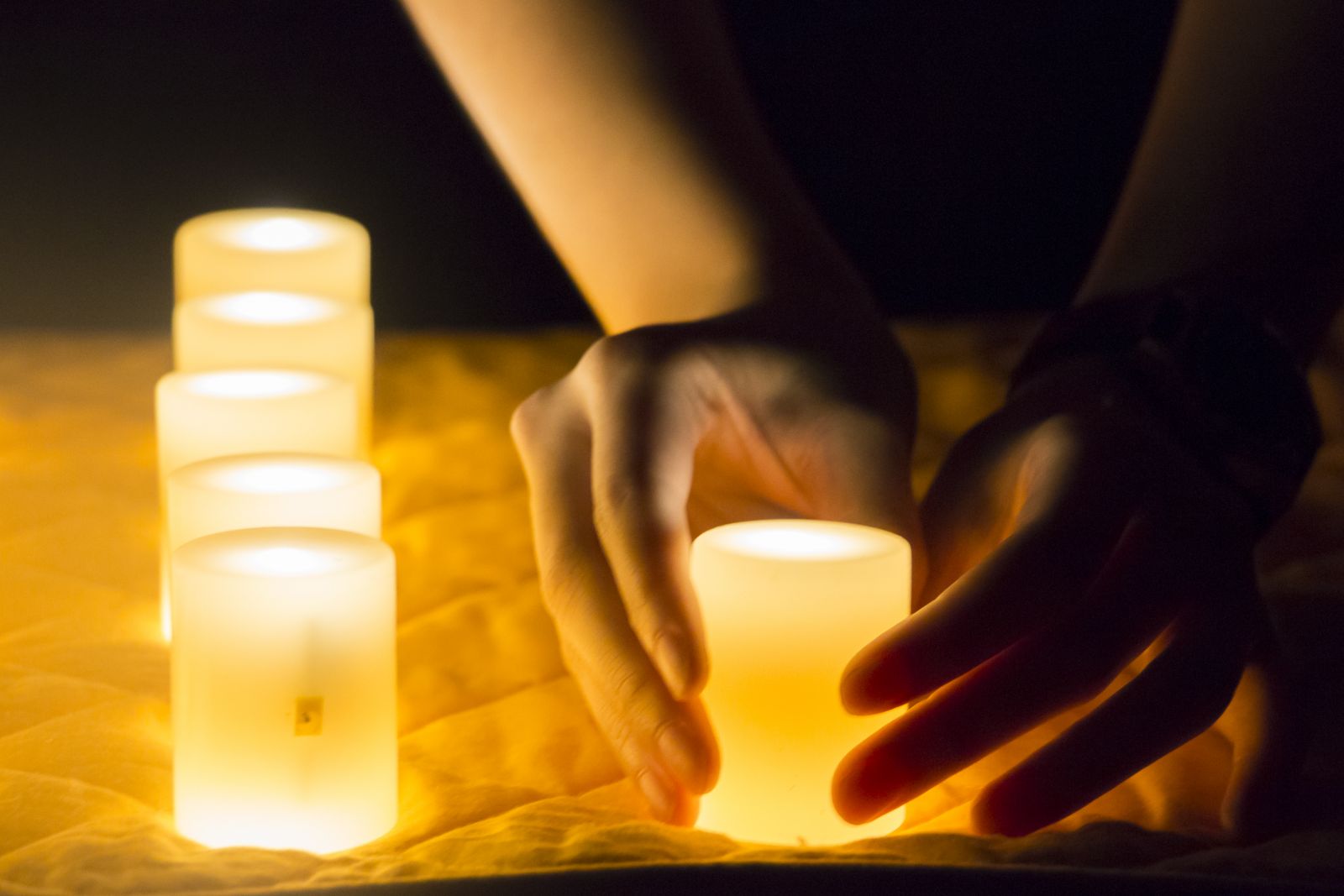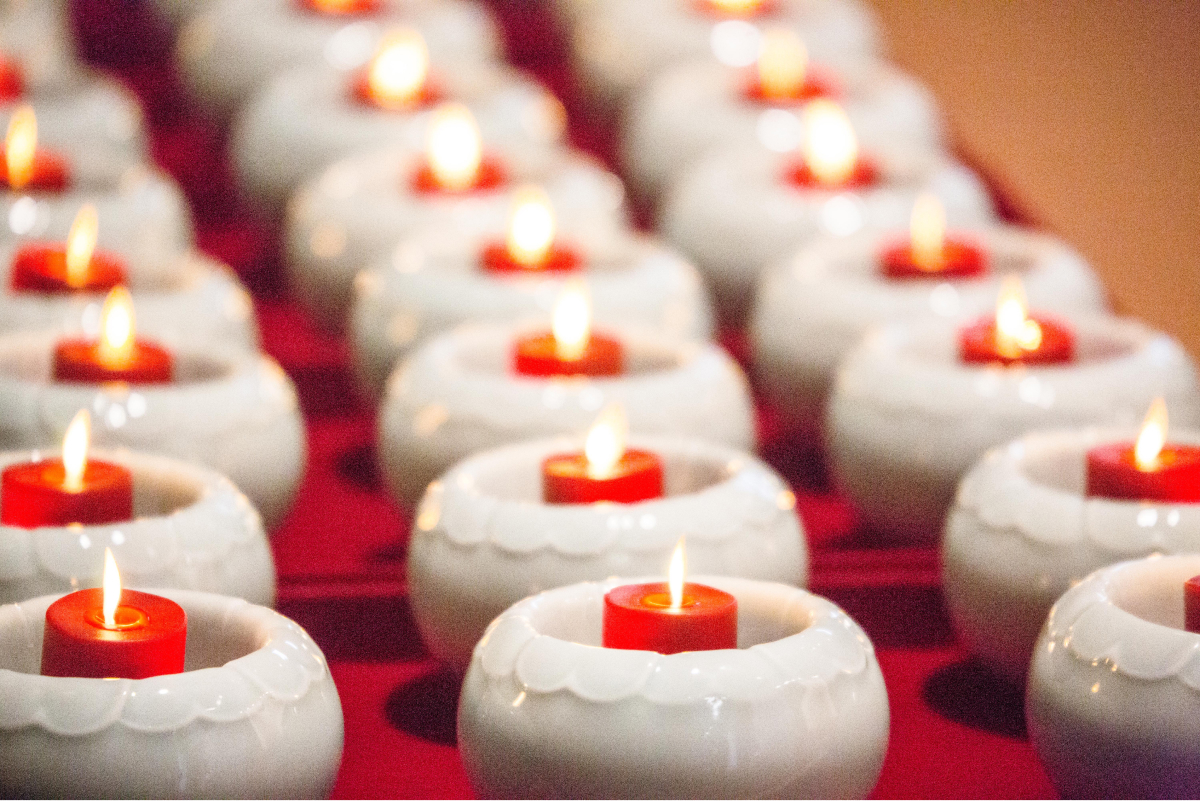Special Topics
Perspectives on Lamp Lighting Across Different Cultures
The radiance emitted by lamps is adored by people worldwide. Consequently, numerous religions or cultures around the world host lamp festivals. Examples include the eight-day celebration of Hanukkah within the Jewish community, as well as the five-day festival of Diwali in India and the Tihar in Nepal. These festivals all employ the act of lighting lamps to convey either a memorial or celebratory significance.The flame of lights symbolizes brightness. In addition to Buddhism, various other religions, cultures, and folk customs also give different meanings to lamp lighting to express their veneration for brightness.
An expression of faith in the truth
 When mentioning candlelight as a symbol of brightness, Zoroastrianism comes to mind. As a fire-worshiping religion founded by Zoroaster of Persia in the sixth century BC, Zoroastrianism regards fire as the symbol of virtue, brightness, purity, creation and life, as opposed to the qualities of darkness, filth, uncleanness, destruction, and death associated with evil. The Western world thus has long held fire in high esteem, and the act of lighting lamps and candles has also been adopted as important religious rituals.
When mentioning candlelight as a symbol of brightness, Zoroastrianism comes to mind. As a fire-worshiping religion founded by Zoroaster of Persia in the sixth century BC, Zoroastrianism regards fire as the symbol of virtue, brightness, purity, creation and life, as opposed to the qualities of darkness, filth, uncleanness, destruction, and death associated with evil. The Western world thus has long held fire in high esteem, and the act of lighting lamps and candles has also been adopted as important religious rituals.Although the origin of Christians lighting candles is lost in history, there is a story that Martin Luther in the 16th century was the first to decorate Christmas trees with candle lights to represent stars in the sky. Nevertheless, as early as 636 CE, Christians celebrated the Nativity of Jesus Christ around the winter solstice, a time when pagans also celebrated their festival (Dies Natalis Solis Invicti, the "Birth of the Invincible Sun"). These festivities involve the use of many lamps and fires to represent warmth and life.
In Catholic churches today, solemn rituals are performed in the Mass, along with harmonious chanting and singing, in addition to whispered prayers that add to the pious atmosphere. Lit candles also add a deep religious significance to the Mass.
Every year on February 2nd, the day of the Presentation of Jesus, churches illuminate blazing candle light to honor the account of Mary presenting Jesus to the Temple. Congregations express their reverence for God through prayers, basking in the candlelight as if receiving the light from Jesus Christ and entering the everlasting brightness.
Moreover, votive candles are also seen in churches. People offer them in front of shrines or religious icons to express their sincerity. Easter, which falls between March and April, uses paschal candles to represent the passion and resurrection of Jesus. The bright candle light in Catholic churches signifies followers' belief in the truth of their faith.
The yearning for freedom of religion
From the 25th day of Kislev in the Hebrew calendar ─ namely the 25th day of the third month of the civil year (usually December in the Gregorian calendar) ─ Jewish people observe the eight-day festival of Hanukkah. In Hebrew, "Hanukkah" means "to dedicate." People celebrate this festival by lighting candles. The lit candles symbolize the hard-earned religious freedom for the Jewish community, as well as to pay homage to lives sacrificed for the sake of freedom.
Hanukkah's origin can be traced back to a story of the Jewish people who fought for their religious freedom. In the third century BCE, after Alexander the Great's conquest of Palestine ─ the region where the Jewish people had long been established ─ was under the rule of the Seleucid Empire in today's Syria. Since then, the Jewish people were forced to worship idols and assimilate Greek culture, which led to Martyrdom of many Jewish people.
The Seleucid rulers' attempt to hellenize Jewish people continued until Antiochus IV Epiphanes, who converted the Holy Temple in Jerusalem into a Greek temple worshiping Zeus. The Maccabees, a priestly family of Jews, organized a rebellion, and reclaimed the Holy Temple in 165 BCE, preventing the Hellenization of the Jewish people as the Jews regained their freedom of religion.
It is said that, to celebrate their victory, the Jews specially held a festival in the Holy Temple. The oil in the lamp stand was sufficient for burning only one day, but the lamp light miraculously lasted for eight days. In gratitude for the victory and miracle that God granted to them, the Jews light candles in remembrance of the day.
Warding off calamities and attracting wealth
 On the last day in the Hindu lunisolar calendar ─ which is around October or November in the Gregorian calendar ─ about ten billion of Hindus worldwide celebrate the forthcoming New Year by holding Diwali. The Hindus light lamps on this day to ward off calamities and ill fortune, with prayers for prosperity in the coming year. People not only exchange gifts with their families and friends, but also light oil lamps to fill the yard, balconies, garden, rooftop, and every corner in the house, thereby infusing the five-day long Diwali with a festive atmosphere.
On the last day in the Hindu lunisolar calendar ─ which is around October or November in the Gregorian calendar ─ about ten billion of Hindus worldwide celebrate the forthcoming New Year by holding Diwali. The Hindus light lamps on this day to ward off calamities and ill fortune, with prayers for prosperity in the coming year. People not only exchange gifts with their families and friends, but also light oil lamps to fill the yard, balconies, garden, rooftop, and every corner in the house, thereby infusing the five-day long Diwali with a festive atmosphere.The origin of Diwali is rooted in Hindu mythology, which revolves around the triumph of good over evil, the success of brightness over darkness, and the conquest of knowledge over ignorance. While there is no official ceremony for Diwali, people tidy up their homes and elaborately decorate them with lamps to show their respect to Hindu deities. Besides, all companies temporarily cease operations during this time to mark the arrival of a new year.
In Nepal, a five-day festival, Tihar, is celebrated on the fifteen day of the eighth month in Nepali Calendar. People light lamps mainly to welcome the Goddess of Wealth and worship animals such as crows, dogs, and cattle to please deities. In addition, the lamps are used to pray for wealth and brightness as well as peace and security in the upcoming year.
Each day of Tihar has a specific subject for worship, with the third day being the most important. People rise early on this day and tidy up their homes to welcome the Goddess of Wealth, which creates a spectacular view consisting of countless glittering lights at night.
Related articles:
The Origin and Transformation of Lamp Offerings
The Diverse Forms of Lamp offerings
The Design of Lamp Offerings at Dharma Drum Mountain
Similarities and Differences in Light Offering in Different Countries
Perspectives on Lamp Lighting Across Different Cultures
Commonly Asked Questions on Light Offering
Resource: Issue 281 of Humanity Magazine, Dharma Drum Publishing Corporation
Translation: Sinag-ling Li (李祥苓)
Editing: Keith Brown, YKL
